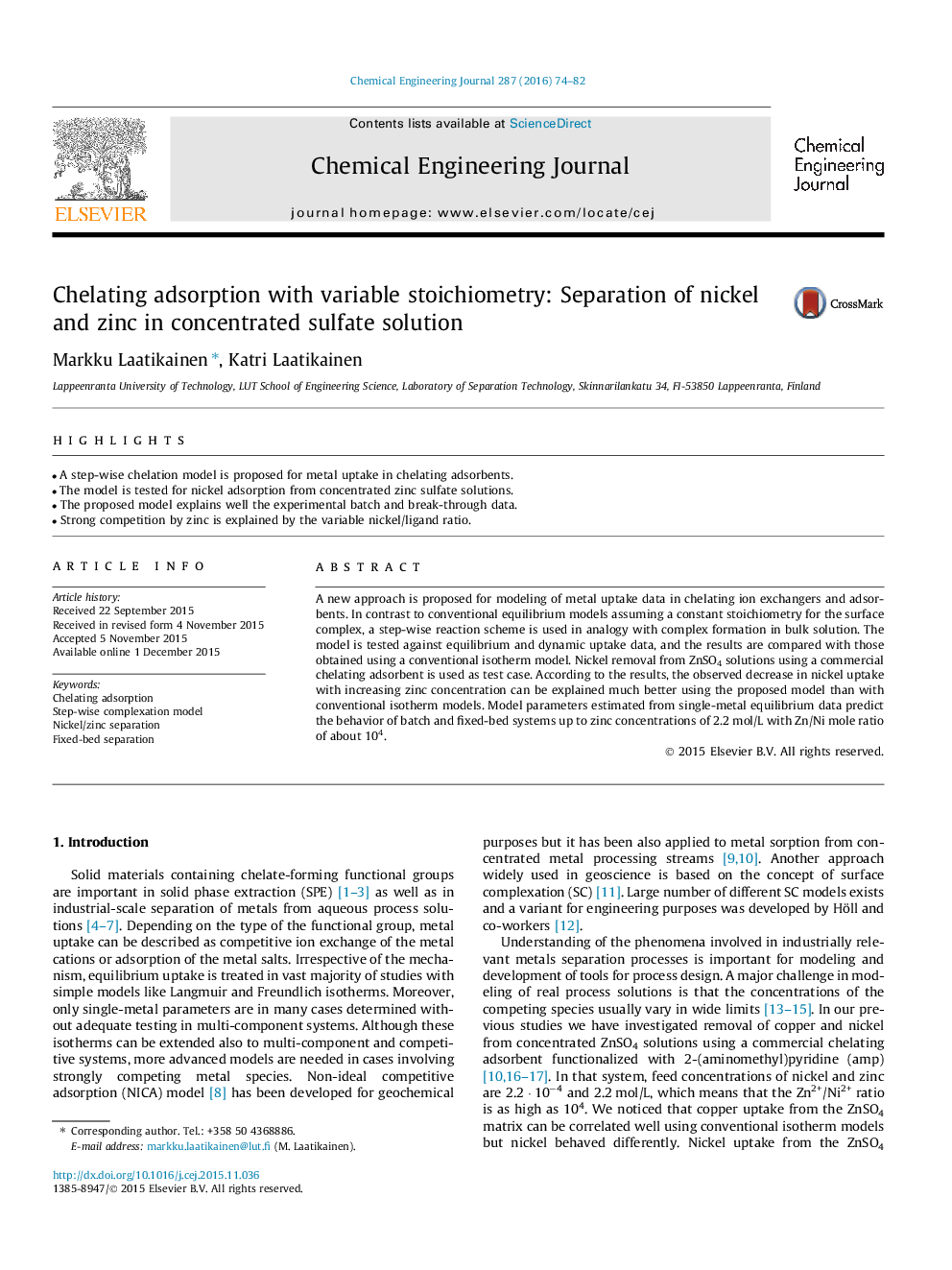| Article ID | Journal | Published Year | Pages | File Type |
|---|---|---|---|---|
| 145875 | Chemical Engineering Journal | 2016 | 9 Pages |
•A step-wise chelation model is proposed for metal uptake in chelating adsorbents.•The model is tested for nickel adsorption from concentrated zinc sulfate solutions.•The proposed model explains well the experimental batch and break-through data.•Strong competition by zinc is explained by the variable nickel/ligand ratio.
A new approach is proposed for modeling of metal uptake data in chelating ion exchangers and adsorbents. In contrast to conventional equilibrium models assuming a constant stoichiometry for the surface complex, a step-wise reaction scheme is used in analogy with complex formation in bulk solution. The model is tested against equilibrium and dynamic uptake data, and the results are compared with those obtained using a conventional isotherm model. Nickel removal from ZnSO4 solutions using a commercial chelating adsorbent is used as test case. According to the results, the observed decrease in nickel uptake with increasing zinc concentration can be explained much better using the proposed model than with conventional isotherm models. Model parameters estimated from single-metal equilibrium data predict the behavior of batch and fixed-bed systems up to zinc concentrations of 2.2 mol/L with Zn/Ni mole ratio of about 104.
